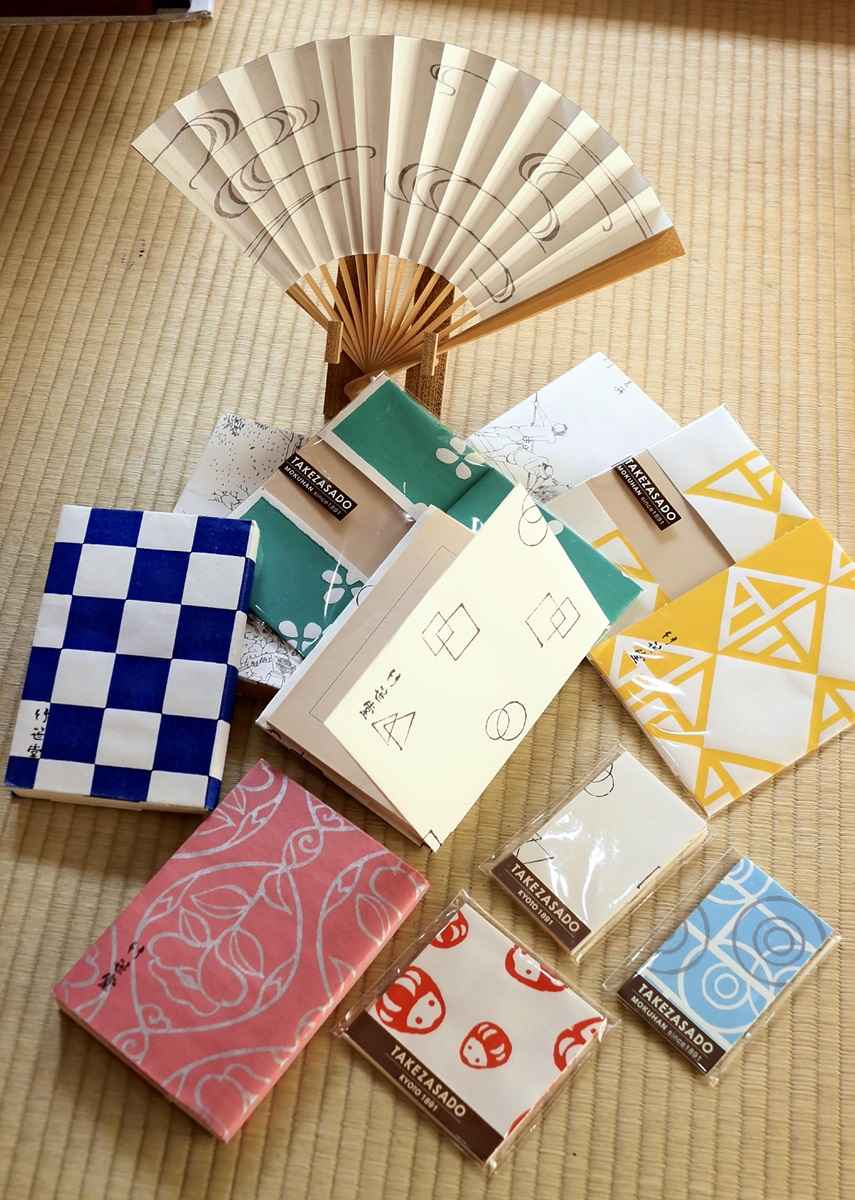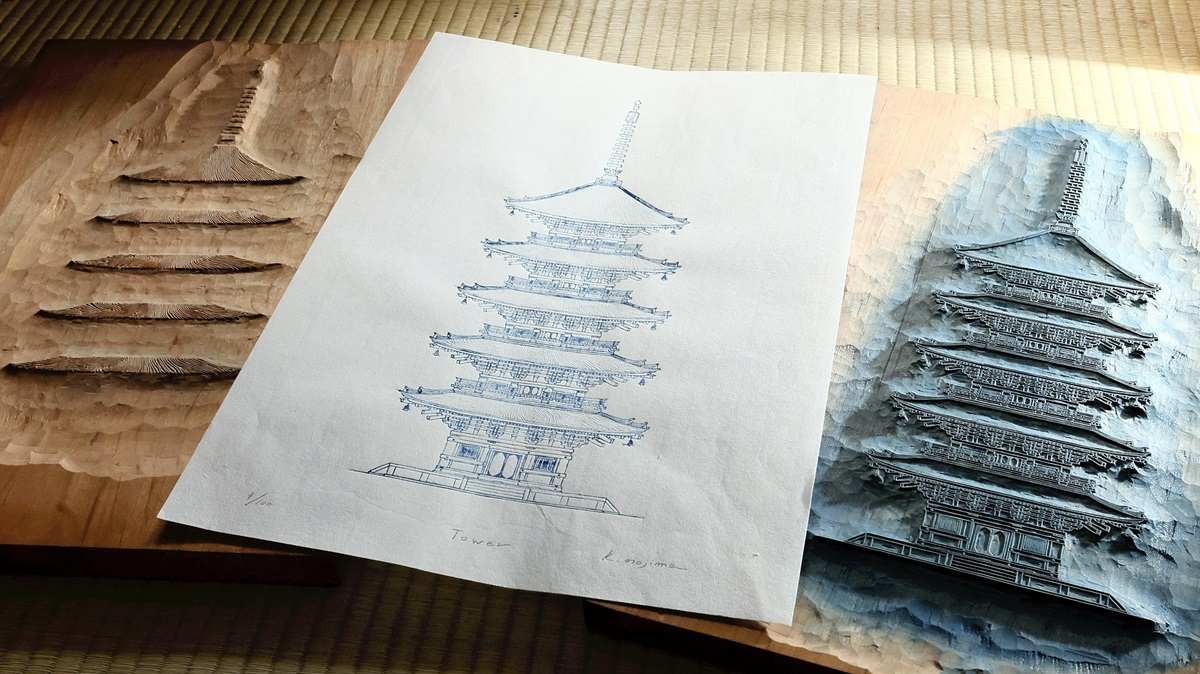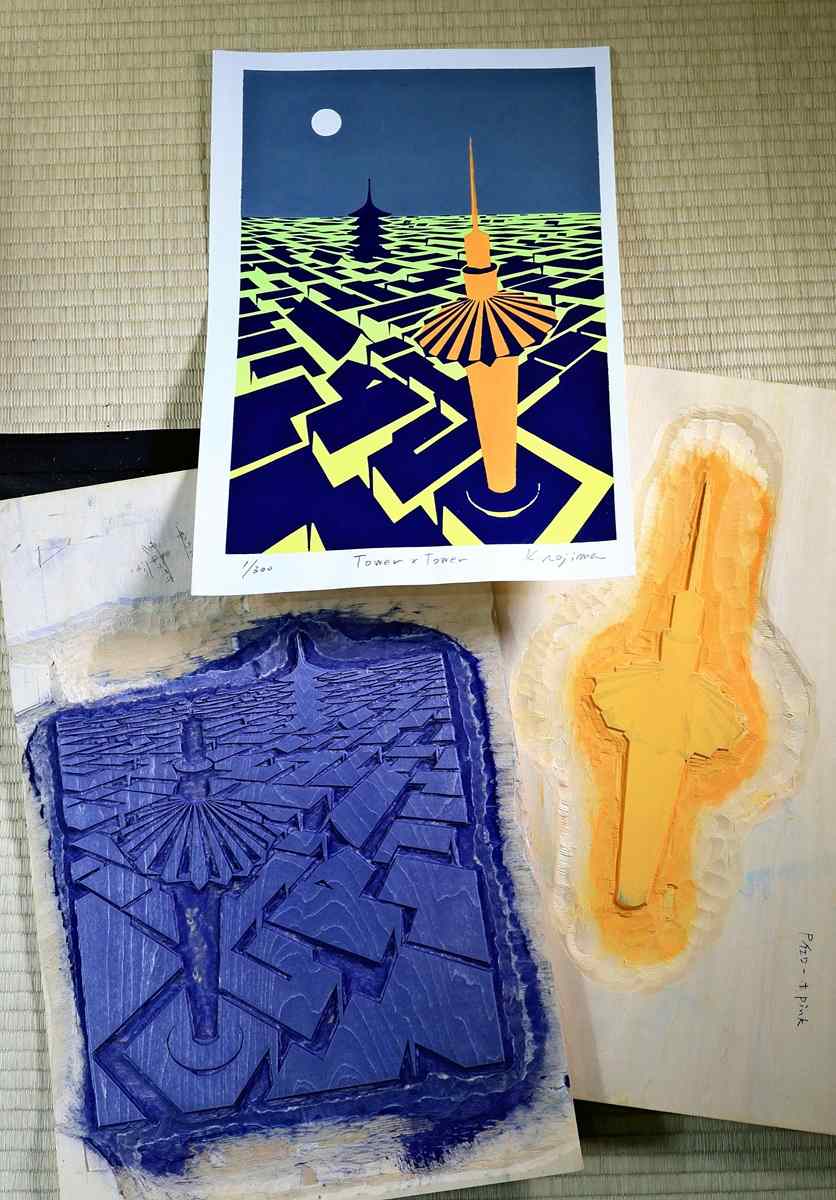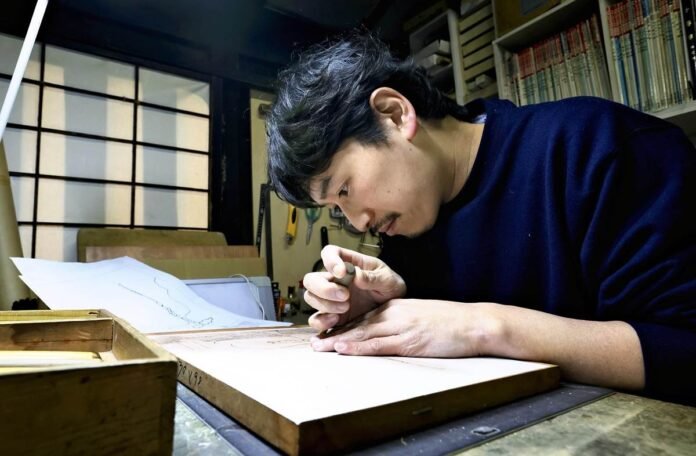Kazuki Nojima engraves a printing block while checking the feel of the block with his hands in Shimogyo Ward, Kyoto.

11:23 JST, May 11, 2024
KYOTO — Kyo-hanga woodblock artist Kazuki Nojima doesn’t hesitate as he etches lines on the surface of a printing block made from the hardwood of a mountain cherry tree. He masterfully handles the knife as if he can already see the end product, which is created after blocks of different colors are pressed on top of each other on the paper.
Nojima said he feels the hardness of the wood block with each engraving stroke and understands with his body how to draw the lines.
“Instead of seeing, I can figure out what to do by feel,” Nojima said.

A fan, book covers and other accessories designed and produced by Takezasado
Unlike Edo woodblock prints – which are usually ukiyo-e prints – the Kyoto version, known as Kyo-hanga, has been used for a wide range of items – from fans, works of art, temple and shrine paper charms to wrapping paper – that culture , entertainment and daily life.
Nojima works at Takezasado in Kyoto’s Shimogyo Ward. Takenaka Mokuhan, a woodblock printing workshop founded in 1891, founded the shop to develop new methods for the modern era. In addition to reproducing classic calligraphy and paint, Takezasado creates original new works and manga themes from woodblock prints. The store also designs record covers in collaboration with another company.
From the start, Takezasado has specialized in coloring and printing on Japanese washi paper. Only Nojima is working on producing logs with an accuracy of 1/10 of a millimeter.
Search the art university
Nojima’s grandfather, who was an art teacher, left many oil paintings in his parents’ home in Kyoto. Nojima’s father was a craftsman in the Kyo-yuzen pattern painting technique.
Nojima himself became interested in painting when he was very young and attended Kyoto City University of Arts after graduating from a high school with an arts and crafts department.
Despite studying sketches and oil paintings with great enthusiasm, Nojima could not express what he saw even in his favorite genre, landscape painting. He devoted himself to a wide range of activities, including kendo, rugby, theater and video production, but did not devote himself to painting.
Woodblock printing was one of the things he thought he could do if he developed the skills. Pablo Picasso and other famous artists also created print works. Nojima tackled the art form as if trying to answer a question: Why did the artists, despite being very good at other forms of expression, work on prints? Nojima said he then started to feel something new.

A reproduction of Katsushika Hokusai’s “Gaifu Kaisei” (A Mild Breeze on a Beautiful Day) from the series “Fugaku Sanjurokkei” (Thirty-six Views of Mount Fuji), top left, and clichés
Around the same time, Kenji Takenaka, the founder of Takezasado, was invited to teach at the university and was struck by the way Nojima worked on printing woodblock prints. As a craftsman, Takenaka had the intuition that Nojima was “a man who makes things by hand.” He hired Nojima as the first sculptor for Takezasado.
Expanding world
Ten years ago, in his mid-20s, Nojima began training under Hiroshi Fujisawa, a leading woodblock sculptor in Kyoto. The training has made it second nature for him to carve accurately and quickly without wasting time or effort.
During his college years, Nojima struggled to find something definitive to draw. After becoming an apprentice, however, his job was to create works of depth through repetitive movements of his hands within shoulder width.

Nojima’s drawing of ‘Tower’, center, and clichés for the work
“The movements are piling up without any reasoning behind it. They expanded my world, instead of limiting my vision,” Nojima said.
Woodcuts are characterized by their homogeneity, but also have a distinctive flair that comes from the collaboration of many people involved in the process. While staying true to the original designs, sculptors create many horizontally inverted wood blocks, depending on color and lines, before entrusting them to craftsmen specialized in printing.
If the slightest blur in a woodblock is considered a failure, it is the craftsman’s failure. If it is seen as a distinctive flair, it is their success – that is what Nojima heard from Fujisawa. Since then, he has kept in mind that signature flair fluctuates thanks to the rigor of the work.

“Tower x Tower” and print blocks for the work
The time when woodcuts were at the height of their prosperity is long gone, and it has been some time since the number of woodcut craftsmen began to decline.
However, the charm of woodblock prints, which cannot be found in digital productions or reproductions, still attracts people’s attention.
“I don’t want people to think it’s because they’re rare,” Nojima said. He believes that the expression that lives today can be shared 100 or 200 years later.
***
If you are interested in the original Japanese version of this story, Click here.



